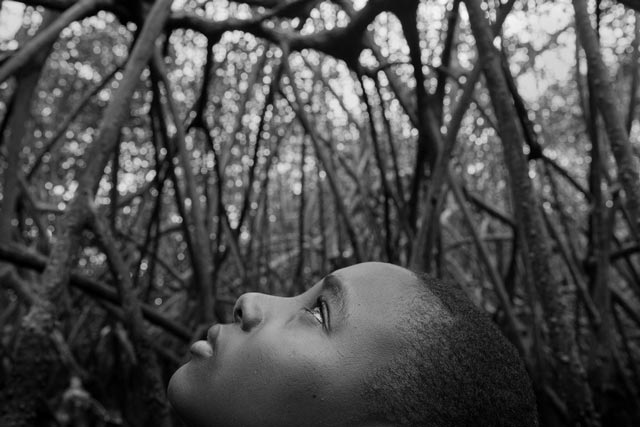The Cayapas Mataje Mangrove Reserve in Northwestern Ecuador is home to the largest mangrove trees in the world and to afro-ecuadorian communities that rely on gathering black shells as their form of livelihood. The people who gather shells are called concheros. Picking shells is a tremendously arduous task as concheros have to crutch down for hours in kneedeep mud and endure the inclement environment of the mangrove to search in the small crevasses of the buried roots. Even though black shells are a culinary delicacy in Ecuador, shell pickers are only paid 8 cents of a dollar per shell. On average, pickers will find between 50 and 100 shells in a day’s work.
In these communities, children as young as 10 years old are expected to pick shells contribute to their families’ income. Most children are good shell-pickers as they are agile and light, allowing them to navigate around the infinite spider web of mangrove roots. Even though community leaders and local authorities encourage children to stay in school, an important number of them drop out of class to become full-time concheros.
This portrait series explores the relationship between childhood, manual labor, and this unique ecosystem.
Organized the exhibition Lord of the Mangrove / Los Reyes del Manglar with photographs by Felipe Jácome. Developed the curatorial structure of the exhibition to convey the sociopolitical message embedded in the iconographic narrative presented by Jácome, who for over seven years has been documenting the lives of children working in mangrove reserves in Ecuador. The exhibition was featured during FotoWeek DC, the annual photography festival in Washington, DC. It was presented as a bilingual exhibition and traveled to the Centro de Arte Contemporáneo de Quito.
